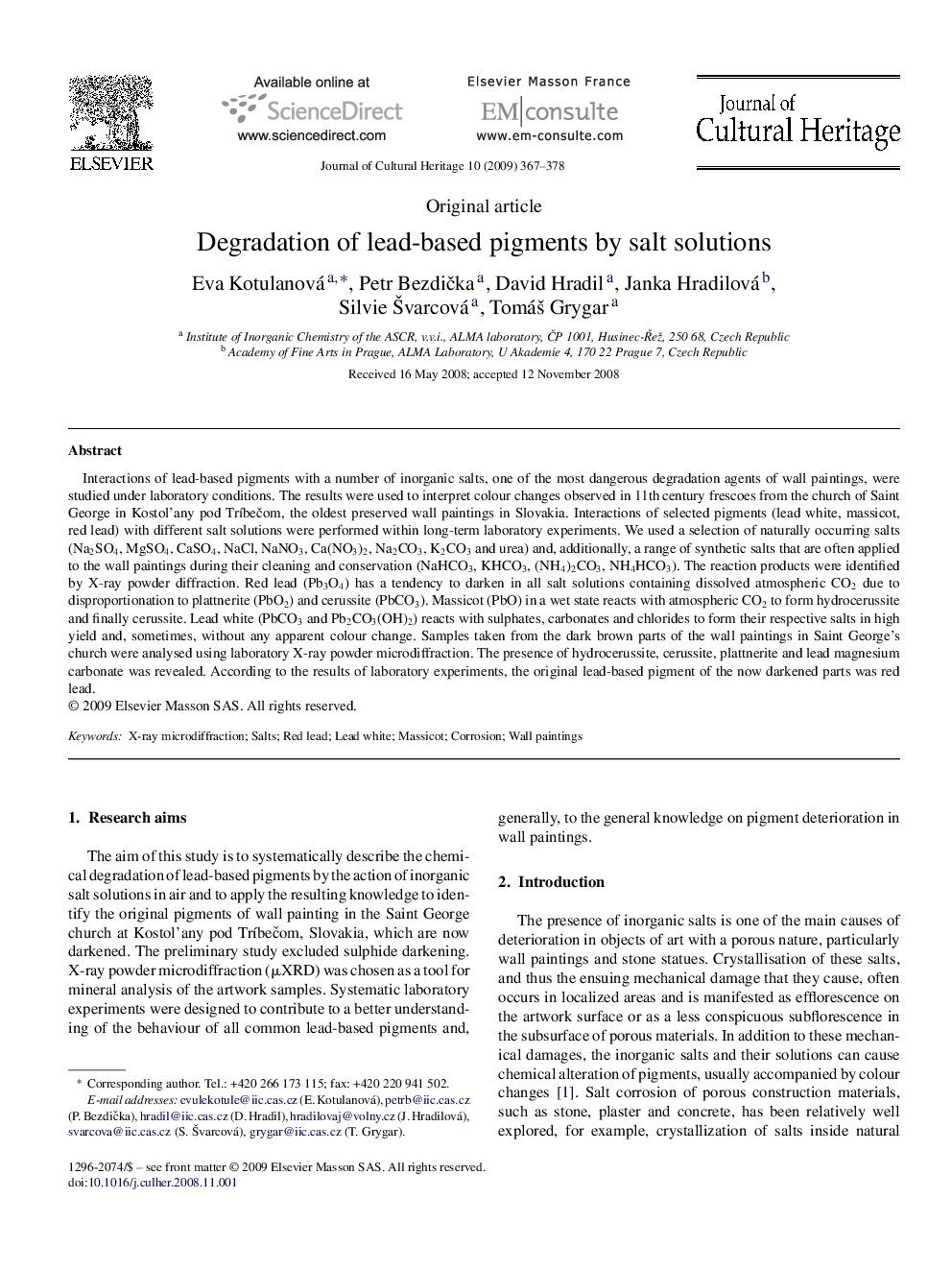| کد مقاله | کد نشریه | سال انتشار | مقاله انگلیسی | نسخه تمام متن |
|---|---|---|---|---|
| 1038581 | 944227 | 2009 | 12 صفحه PDF | دانلود رایگان |

Interactions of lead-based pigments with a number of inorganic salts, one of the most dangerous degradation agents of wall paintings, were studied under laboratory conditions. The results were used to interpret colour changes observed in 11th century frescoes from the church of Saint George in Kostoľany pod Tríbečom, the oldest preserved wall paintings in Slovakia. Interactions of selected pigments (lead white, massicot, red lead) with different salt solutions were performed within long-term laboratory experiments. We used a selection of naturally occurring salts (Na2SO4, MgSO4, CaSO4, NaCl, NaNO3, Ca(NO3)2, Na2CO3, K2CO3 and urea) and, additionally, a range of synthetic salts that are often applied to the wall paintings during their cleaning and conservation (NaHCO3, KHCO3, (NH4)2CO3, NH4HCO3). The reaction products were identified by X-ray powder diffraction. Red lead (Pb3O4) has a tendency to darken in all salt solutions containing dissolved atmospheric CO2 due to disproportionation to plattnerite (PbO2) and cerussite (PbCO3). Massicot (PbO) in a wet state reacts with atmospheric CO2 to form hydrocerussite and finally cerussite. Lead white (PbCO3 and Pb2CO3(OH)2) reacts with sulphates, carbonates and chlorides to form their respective salts in high yield and, sometimes, without any apparent colour change. Samples taken from the dark brown parts of the wall paintings in Saint George's church were analysed using laboratory X-ray powder microdiffraction. The presence of hydrocerussite, cerussite, plattnerite and lead magnesium carbonate was revealed. According to the results of laboratory experiments, the original lead-based pigment of the now darkened parts was red lead.
Journal: Journal of Cultural Heritage - Volume 10, Issue 3, July–September 2009, Pages 367–378